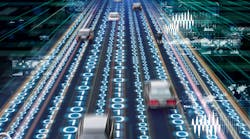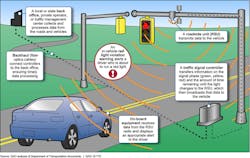The Internet of Things (IoT) is an interconnection of devices and services that allow a free flow of data. These devices and services can be anything, ranging from home appliances like coffee makers to commercial concerns like traffic management. All you require is integrating software with a means of internet connectivity—and there you go, taking all the benefits of what IoT has to offer.
The idea behind IoT is creating a system that stores all the data on the cloud without having the need of human efforts in collecting it. It is believed that the impact of IoT on the world will be immense in the upcoming years. And, given the current trends, its effect on human life is increasing exponentially and will only continue to rise with the concept of smart cities setting in.
Smart cities rely heavily on IoT. According to Gartner, nearly 60% of all installed IoT devices were used in commercial buildings and transportation in 2017. Yes, IoT is proving highly beneficial in combatting the alarming problem of traffic congestion. Not only it can reduce costs, but also manage the traffic in a significant way by integrating IoT technology in various traffic calming elements like traffic lights and smart parking.
Though the presence of IoT offers a cutting-edge opportunity in traffic management and solutions, it comes with certain limitations that you cannot ignore. This article highlights three critical challenges that you face while integrating IoT in the traffic management system. Tackling each in turn:
1. Security Breaches
As mentioned earlier, IoT is all about interconnected devices and services, which will continue to grow exponentially. This makes it imperative for you to protect the sensitive data and networks. It’s simple: The growing number of devices accessing the central network will increase the probability of malicious attacks by the hackers. Data privacy is of supreme importance and you need to ensure that it is not vulnerable to the public at large.
An added layer of security may help to enable you to create a hack-proof traffic management solution. Ensure that all the IoT devices adhere to your security policies. Other considerations to take into account are data transmission encryption, user access control, and device authentication.
A breakdown of devices needed for a successful IoT-driven traffic management system. (Credit: GAO)
2. High-Tech Network Infrastructure
Remember, all of these high-tech solutions will need high-speed data transfer techniques, as the proliferation of IoT devices will make it necessary for you to work with larger data capacity. Not only this, but you will also need to manage more IP addresses—in short, increasing the workload of IT teams. This means you need a really good network infrastructure in place.
It is best to come up with the network facilities that are able to handle constant communication, as well as the collection of data from the sensors and other IoT devices. As and when the automated workflows and controls will be added to each program, the IoT solutions’ data outputs will also grow simultaneously. So, it is important to have strong networks that have the potential to easily fit into the IoT needs as and when they evolve.
3. Increased investments
Yes, it is totally true that the adoption of IoT technology will reduce costs and lead to operational optimizations. But, on the other hand, it is also true that integrating it will require a significant investment. You will have to incur expenses associated with network infrastructure, retrofitting vehicles or machines to be directly connected to an IoT device, implementation downtime, configuration, customization, training, and security, as well as the cost to plan, implement, and manage the IoT system.
The success of IoT technology in traffic management—or any industry, for that matter—largely depends on the ability to successfully examine, collect, and mine the data, as well as to gather insights from a constantly evolving set of IoT devices. Well, there are many cloud-based solutions that can be used to track IoT assets and further report on their basic features. However, there are fewer solutions that aid in managing and optimizing a significant cost element in the application of IoT technology.
Overcoming the challenges is the key to IoT’s success in traffic management.
Traffic is definitely a crucial aspect that showcases a city’s efficiency status and livability factor. There are many other limitations that will come to light as IoT increases its potentialities in traffic management.
But, for now, the cities that are planning to integrate IoT in their traffic management systems will have to prevail over basic infrastructure problems. These can be anything from road planning and zoning to construction-related issues. Not solving them will create complexities in implementing IoT technology. So, diverting your efforts toward solving these issues should be your first step in overcoming the IoT challenges.
You can go on to the next level of integrating high-tech solutions, like providing the city with great internet connectivity, as if for any reason connectivity is hampered, the entire smart city could fall apart. Hence, for IoT, it is very crucial to have a high-speed data transfer system in place.
Once smart cities evolve with the aforementioned changes, IoT is sure to play a key role in the development and integration of traffic management as a whole.
Yuvrajsinh Vaghela is a marketing manager at Space-O Technologies, a firm with expertise in developing iOS mobile apps and offering IoT management solutions such as the Enterprise Mobility Management.


